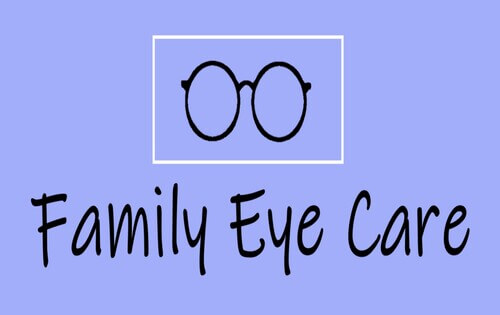Andalusia Eye Center: Premier Services for Vision Improvement
Andalusia Eye Center: Premier Services for Vision Improvement
Blog Article
The Pros and Cons of Various Refractive Surgeries for Improved Eyecare

LASIK Surgical Treatment
LASIK surgical treatment is a generally carried out refractive treatment that aims to fix vision problems such as farsightedness, astigmatism, and nearsightedness. This surgical method has actually gained appeal as a result of its efficiency in offering clients with more clear vision and reducing their dependence on glasses or call lenses. During the procedure, a thin flap is produced on the cornea, and a laser is made use of to reshape the underlying cells, dealing with the refractive error. The flap is after that rearranged, permitting for quick recovery and marginal discomfort for the patient.
One of the primary advantages of LASIK surgical procedure is the rapid enhancement in vision experienced by several people. It is necessary for people thinking about LASIK surgery to undertake a comprehensive analysis by an eye care specialist to determine if they are appropriate prospects for the treatment.
PRK Procedure
The PRK procedure, additionally known as Photorefractive Keratectomy, is a type of refractive surgery that intends to deal with vision issues similar to LASIK surgical treatment. Unlike LASIK, which involves producing a flap in the cornea, PRK works on the surface area layer of the cornea.
One of the benefits of PRK over LASIK is that it removes the threat of flap-related issues since no flap is developed during the surgical procedure. Despite the longer healing duration, PRK can be a suitable option for people seeking vision adjustment surgery.
SMILE Surgery
A cutting-edge refractive surgical procedure technique gaining popularity in the field of ophthalmology is SMILE Surgical treatment. Little Laceration Lenticule Removal (SMILE) is a minimally invasive procedure that deals with vision by reshaping the cornea making use of a femtosecond laser. Unlike typical LASIK surgery, SMILE Surgical treatment involves creating a small laceration in the cornea to extract a lenticule, which leads to less disruption to the corneal framework and possibly quicker recuperation times.
One of the primary benefits of SMILE Surgery is its ability to deal with myopia (nearsightedness) and astigmatism with high precision, leading to superb aesthetic outcomes for people. The minimally intrusive nature of the treatment also decreases the threat of complications such as completely dry eye disorder, making it a beneficial option for people seeking refractive surgical procedure.

LASEK Method
Having checked out the benefits and factors to consider of SMILE Surgical treatment, one more significant refractive surgical procedure strategy worth analyzing is the LASEK Method. LASEK, which represents Laser-Assisted Subepithelial Keratectomy, is a type helpful hints of laser eye surgery that aims to fix refractive errors such as myopia (nearsightedness), hyperopia (farsightedness), and astigmatism.
Unlike LASIK, LASEK does not entail creating a corneal flap. Instead, throughout a LASEK treatment, the surgeon uses a diluted alcohol solution to loosen up the thin external layer of the cornea, recognized as the epithelium.
One of the key advantages of LASEK is that it can be ideal for individuals with thin corneas that might not be great candidates for LASIK. Additionally, LASEK typically results in minimal post-operative pain and a quicker recovery time compared to PRK. Nevertheless, the visual recovery process with LASEK may be slightly her response longer than with LASIK.
Implantable Contact Lenses
Implantable Get in touch with Lenses offer a long-lasting vision correction solution for people seeking an option to conventional get in touch with lenses or glasses. These lenses, additionally referred to as phakic intraocular lenses, are operatively inserted into the eye to remedy refractive errors such as nearsightedness (nearsightedness), hyperopia (farsightedness), and astigmatism. neurologist Andalusia. Unlike traditional call lenses that rest on the surface of the eye, implantable call lenses function within the eye itself, providing clear vision without the demand for daily maintenance or removal
One of the crucial benefits of implantable get in touch with lenses is their permanence. As soon as put, they can continue to be in the eye indefinitely, providing constant and stable vision correction. Furthermore, these lenses can be an excellent option for people who are not great prospects for laser eye surgical procedure or that like a reversible vision improvement procedure.
However, implantable get in touch with lenses do bring some threats, including the capacity for cataracts or raised eye stress. It is vital for people considering this option to consult with an eye treatment specialist to figure out if implantable call lenses are the right selection for their details needs and eye health.
Conclusion
In verdict, each sort of refractive surgical procedure has its very own benefits and disadvantages. LASIK surgical procedure is prominent for its quick recuperation time, while PRK treatment may appropriate for patients with slim corneas. SMILE surgical treatment offers marginal discomfort throughout the Click Here treatment, but LASEK strategy may have a longer healing procedure. Implantable get in touch with lenses provide an option for those that are not suitable candidates for traditional surgical procedures. Individuals should consult with their eye treatment copyright to establish the ideal alternative for their individual demands.

Overall, SMILE Surgical treatment offers a promising option for people looking to improve their vision with refractive surgical procedure.
Report this page